Search Result
Results for "
glucose uptake
" in MedChemExpress (MCE) Product Catalog:
| Cat. No. |
Product Name |
Target |
Research Areas |
Chemical Structure |
-
- HY-N5083
-
|
|
Others
|
Inflammation/Immunology
|
|
Saponarin is a natural flavonoid isolated from Gypsophila trichotoma, with antioxidant, anti-inflammatory and hepatoprotective activities. Saponarin activates AMPK in a calcium-dependent manner, thus regulating gluconeogenesis and glucose uptake .
|
-

-
- HY-N7605
-
|
|
Others
|
Metabolic Disease
|
|
11-epi-mogroside V is a mogroside in the fruit of Siraitia grosvenori. 11-epi-mogroside V exhibits considerable bioactivity in promoting glucose uptake in human HepG2 cells in vitro .
|
-
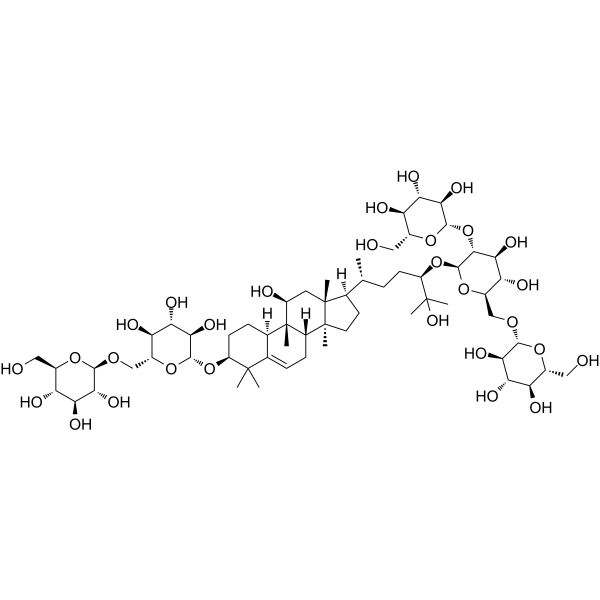
-
- HY-113870
-
|
|
Fluorescent Dye
|
Others
|
|
6-NBDG is a fluorescent glucose analogue, it can be used for fluorescence imaging and monitoring glucose transport and uptake. 6-NBDG can be used as a fluorescent probe for detecting macrophage-rich atherosclerotic plaques .
|
-

-
- HY-N8490
-
|
|
Others
|
Metabolic Disease
|
|
Eicosyl ferulate, a phenolic compound, is isolated from the fresh root and stem of Aristolochia kankauensis. Eicosyl ferulate exhibits glucose uptake stimulatory activity .
|
-
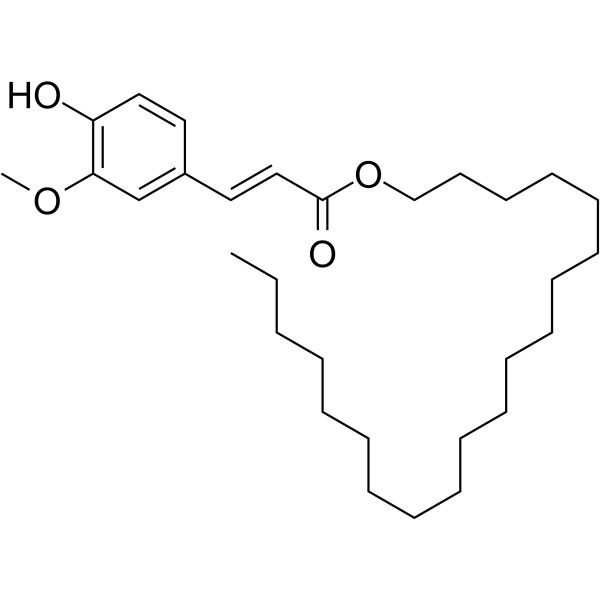
-
- HY-W411439
-
|
|
Others
|
Metabolic Disease
|
|
1-O-p-Coumaroyl-β-D-glucose can promote glucose uptake in HuH7 cells, and be be extracted from Luffa cylindrica (L.) Roem (sponge gourds) .
|
-
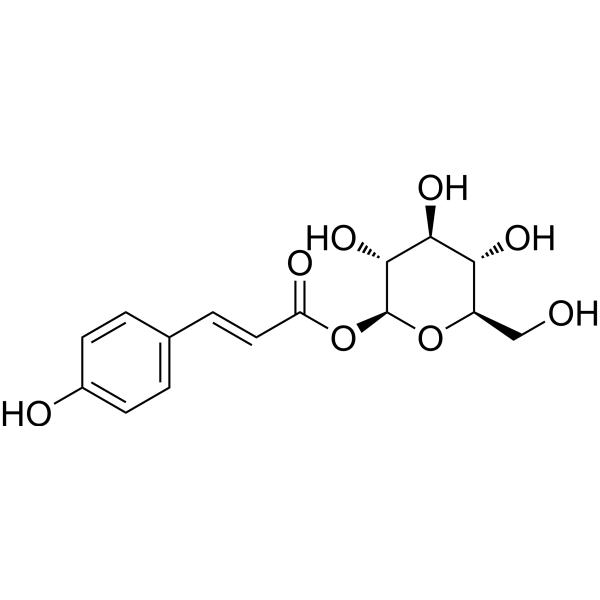
-
- HY-146036
-
|
|
Endogenous Metabolite
|
Metabolic Disease
|
|
NADH-IN-1 has NADH:ubiquinone oxidoreductase inhibitory activity with an IC50 value of 27 μM. NADH-IN-1 can effectively stimulate glucose uptake in vitro. NADH-IN-1 is readily metabolised by the liver. NADH-IN-1 can be used for researching diabetes .
|
-
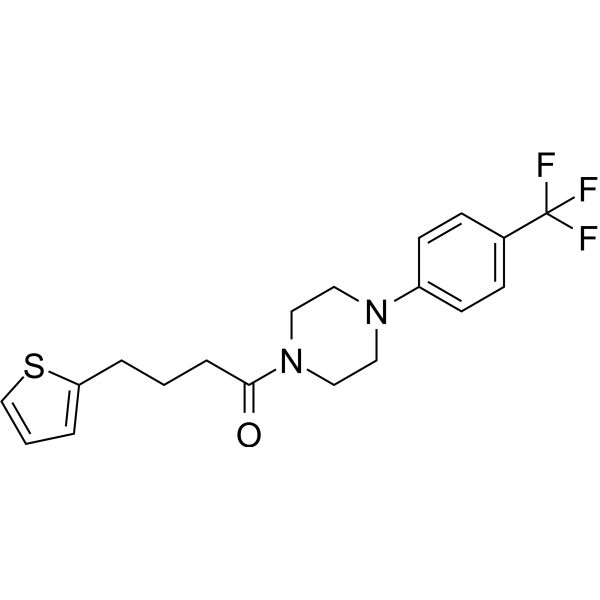
-
- HY-163294
-
|
|
PPAR
|
Metabolic Disease
|
|
PPARγ agonist 10 (compound 33g) is a PPARγ agonist, and stimulats the insulin secretion, glucose uptake and insulin Sensitivity in βTC6 Cells .
|
-
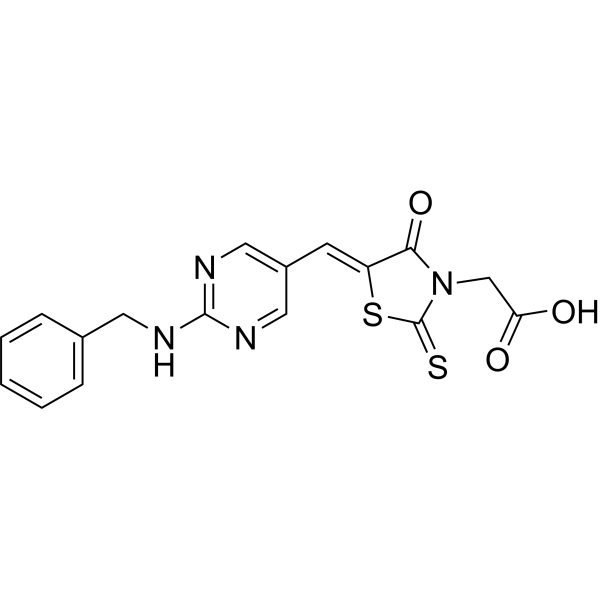
-
- HY-153018
-
|
|
Phosphatase
|
Metabolic Disease
|
|
PTP1B-IN-22, a ZINC02765569 derivative, is a potent protein tyrosine phosphatase 1B (PTP1B) inhibitor. PTP1B-IN-22 has PTP1B inhibition and glucose uptake in skeletal muscle L6 myotubes .
|
-

-
- HY-142088
-
|
|
Endogenous Metabolite
|
Metabolic Disease
|
|
Beauverolide Ka, a cyclotetradepsipeptide, is a metabolite of Beauveria bassiana fungus. Beauverolide Ka stimulates glucose uptake in cultured rat L6 myoblasts at 50 μM. Beauverolide Ka exhibits protecting effects on HEI-OC1 cells at 10 μM and shows dose-dependent activity in both L6 myoblasts and myotubes .
|
-
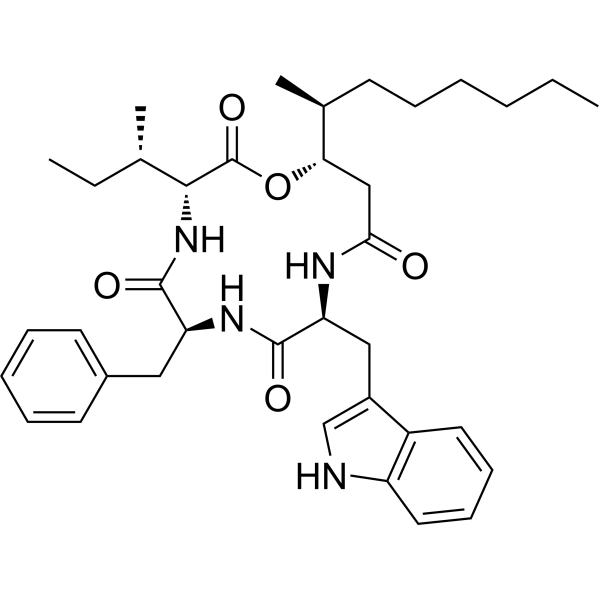
-
- HY-W040127
-
|
|
Insulin Receptor
|
Metabolic Disease
|
|
Peonidin 3-O-glucoside chloride, an anthocyanin, act as an insulin secretagogue. Peonidin 3-O-glucoside chloride can increase glucose uptake in HepG2 cells. Peonidin 3-O-glucoside chloride has the potential for type-2 diabetes comorbidities research .
|
-
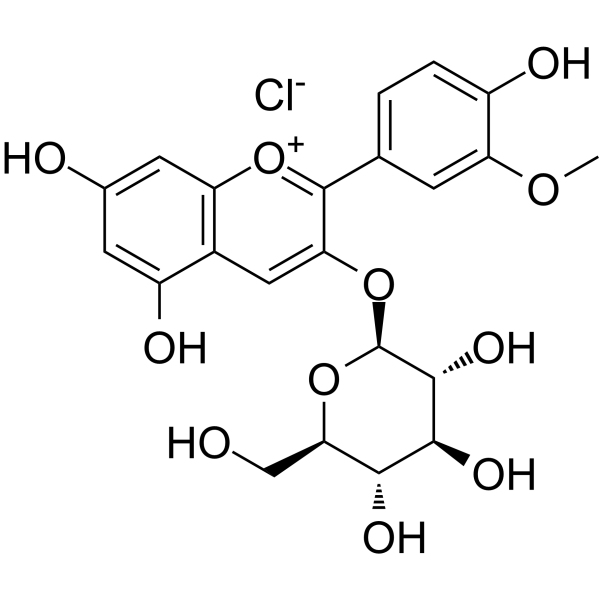
-
- HY-103721
-
|
|
Sirtuin
|
Cancer
|
|
SIRT6-IN-2 (Compound 5) is a selective SIRT6 inhibitor (IC50: 34 μM). SIRT6-IN-2 increases acetylation of H3K9 and increases glucose uptake in cultured cells. SIRT6-IN-2 also reduces T cell proliferation. SIRT6-IN-2 has immunosuppressive and chemosensitizing effects .
|
-
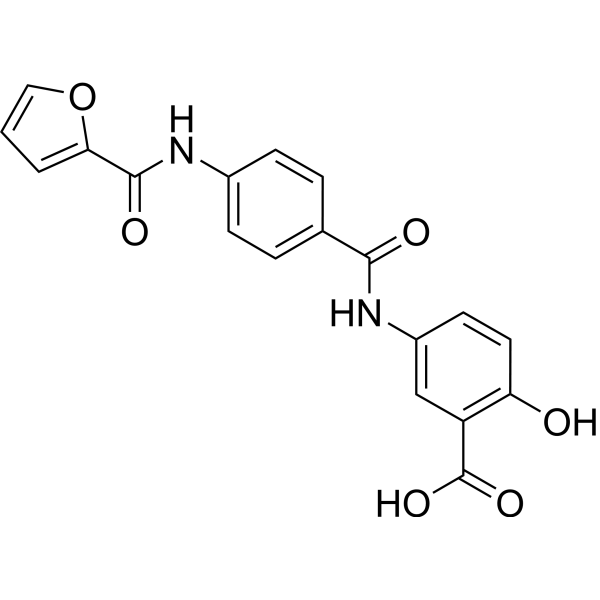
-
- HY-N3426
-
|
|
NO Synthase
Akt
AMPK
|
Metabolic Disease
|
|
Kazinol B, a prenylated flavan with a dimethyl pyrane ring, is an inhibitor of nitric oxide (NO) production. Kazinol B improves insulin sensitivity by enhancing glucose uptake via the insulin-Akt signaling pathway and AMPK activation. Kazinol B has the potential for diabetes mellitus research .
|
-
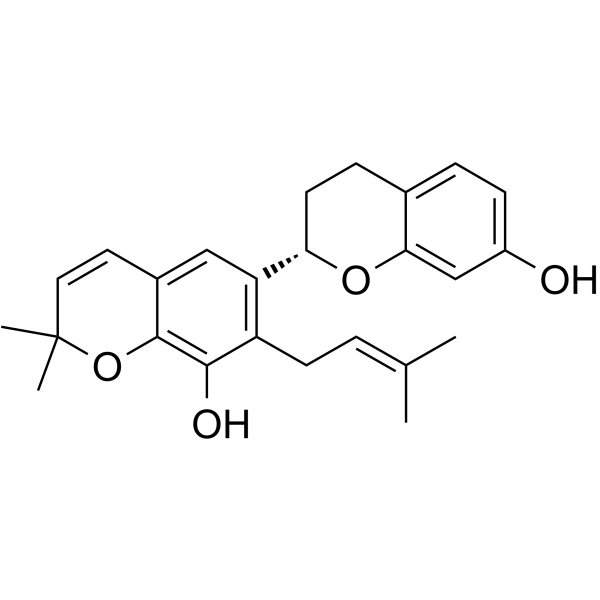
-
- HY-W176629
-
-

-
- HY-N0457
-
|
Cichoric acid; Dicaffeoyltartaric acid
|
Reactive Oxygen Species
Apoptosis
|
Metabolic Disease
Inflammation/Immunology
|
|
Chicoric acid (Cichoric acid), an orally active dicaffeyltartaric acid, induces reactive oxygen species (ROS) generation. Chicoric acid inhibits cell viability and induces mitochondria-dependent apoptosis in 3T3-L1 preadipocytes through ROS-mediated PI3K/Akt and MAPK signaling pathways. Chicoric acid increases glucose uptake, improves insulin resistance, and attenuates glucosamine-induced inflammation. Chicoric acid has antidiabetic properties and antioxidant, anti-inflammatory effects .
|
-

-
- HY-N8438
-
|
Methyl lignocerate; Tetracosanoic Acid Methyl Ester
|
Others
|
Metabolic Disease
|
|
Methyl tetracosanoate (Methyl lignocerate) is a fatty acid methyl ester with anti-diabetic activity .
|
-
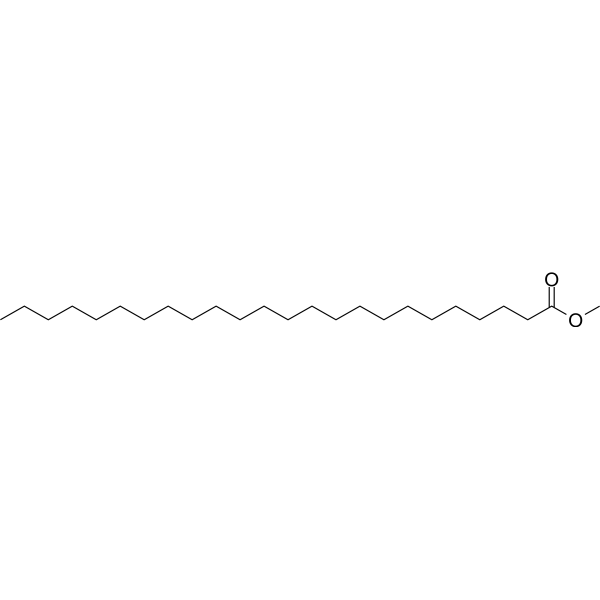
-
- HY-101903
-
|
|
FABP
|
Cardiovascular Disease
Metabolic Disease
|
|
BMS-309403 is a potent, orally active and selective adipocyte fatty acid binding protein (also known as FABP4, aP2) inhibitor with Kis of <2, 250, and 350 nM for FABP4, FABP3, and FABP5, respectively. BMS-309403 interacts with the fatty-acid-binding pocket within the interior of the protein and competitively inhibits the binding of endogenous fatty acids. BMS-309403 improves endothelial function in apolipoprotein E-deficient mice and in cultured human endothelial cells .
|
-
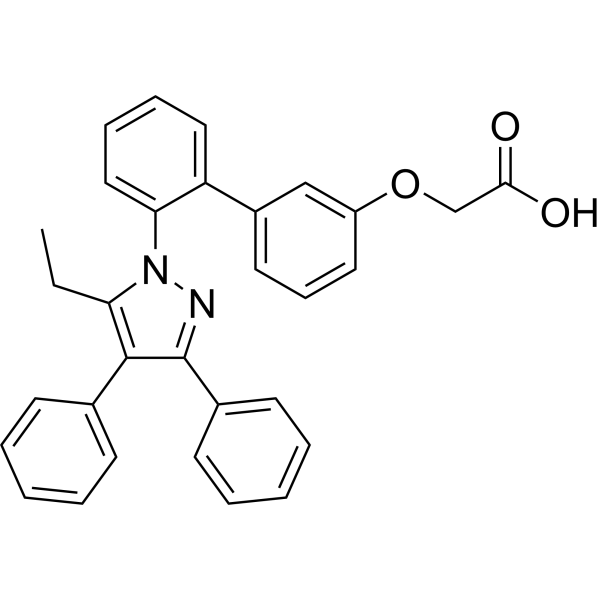
-
- HY-101903A
-
|
|
FABP
|
Cardiovascular Disease
Metabolic Disease
|
|
BMS-309403 sodium is a potent, orally active, and selective adipocyte fatty acid binding protein (also known as FABP4, aP2) inhibitor, with Kis of <2, 250, and 350 nM for FABP4, FABP3, and FABP5, respectively. BMS-309403 sodium interacts with the fatty-acid-binding pocket within the interior of the protein and competitively inhibits the binding of endogenous fatty acids. BMS-309403 sodium improves endothelial function in apolipoprotein E-deficient mice and in cultured human endothelial cells .
|
-

-
- HY-153612
-
|
|
GLUT
Parasite
|
Infection
Inflammation/Immunology
|
|
MMV009085 is a potent PfHT1 (Plasmodium falciparum hexose transporter)-specific inhibitor and a potential anti-malarial agent . MMV009085 is also a human glucose transporter inhibitor, it has high potency in inhibiting both glucose uptake (IC50: 2.6 μM in glucose uptake assay) and growth of the parasites (EC50: 1.23±0.04 μM against 3D7) .
|
-
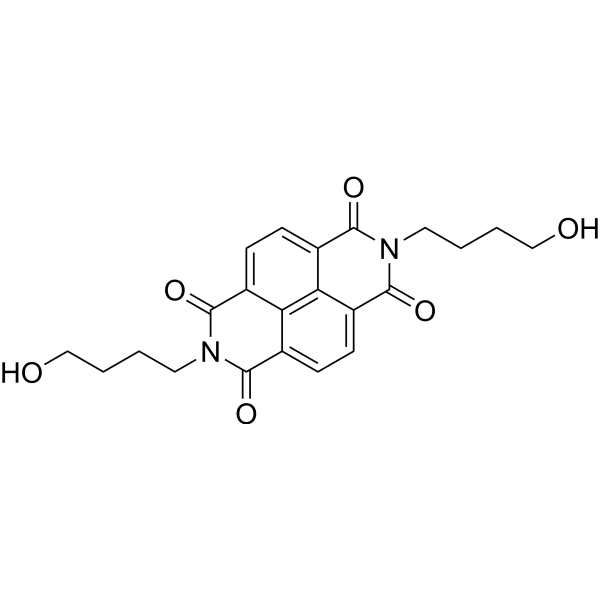
-
- HY-139409
-
|
|
Others
|
Metabolic Disease
|
|
2-Deoxy-D-glucose 6-phosphate is an intermediate of 2-deoxy-D-glucose (2-DG) . 2-Deoxy-D-glucose is incorporated into glycogen .
|
-
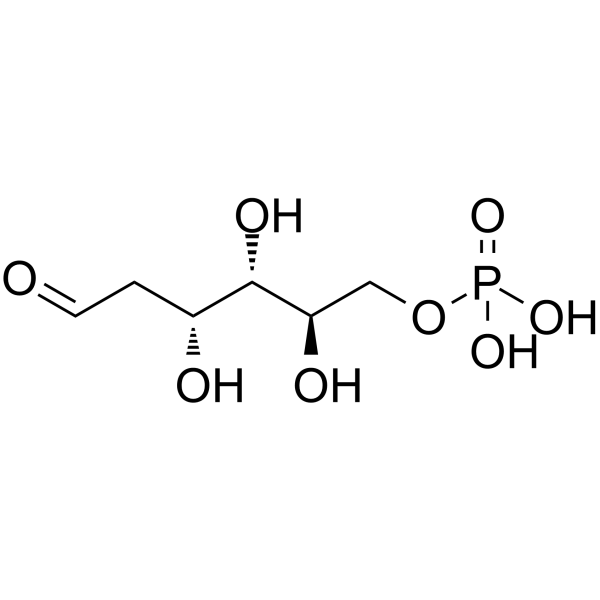
-
- HY-N7912
-
|
(2S)-Pterosin A
|
Others
|
Metabolic Disease
|
|
Pterosin A is an orally active anti-diabetic agent. Pterosin A promotes glucose uptake, increases serum insulin, and improves hyperglycemia and glucose intolerance in diabetic mice. Pterosin A can be isolated from Pteridium aquilinum .
|
-

-
- HY-N2486
-
|
|
Fatty Acid Synthase (FASN)
Apoptosis
|
Cancer
|
|
Desoxyrhaponticin is a kind of oral drug that inhibits effective fatty acid synthesis (FASN), and has a fatal effect on cancer cells. Desoxyrhaponticin has the ability to inhibit glucose uptake, improve oral glucose tolerance as a diabetic agent, and possess anti-diabetic effects.
|
-
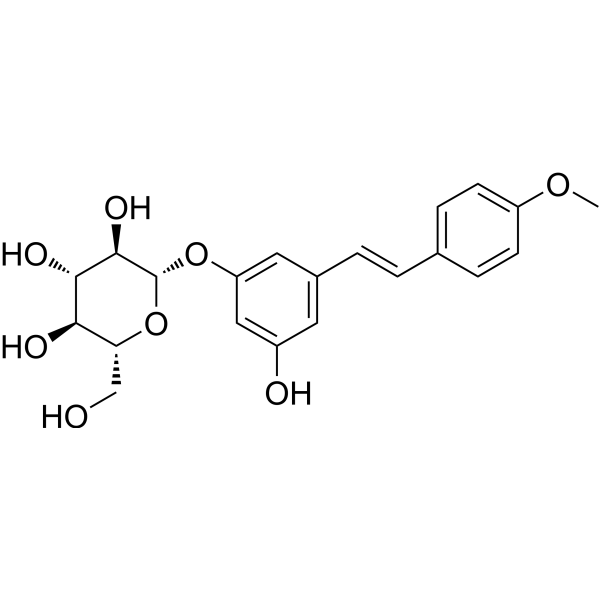
-
- HY-156690
-
|
|
Others
|
Metabolic Disease
|
|
2-Quinizarincarboxylic acid (Compound 15) is a glucose uptake inhibitor, with the inhibitory rate of 24.9% at 50 μM .
|
-
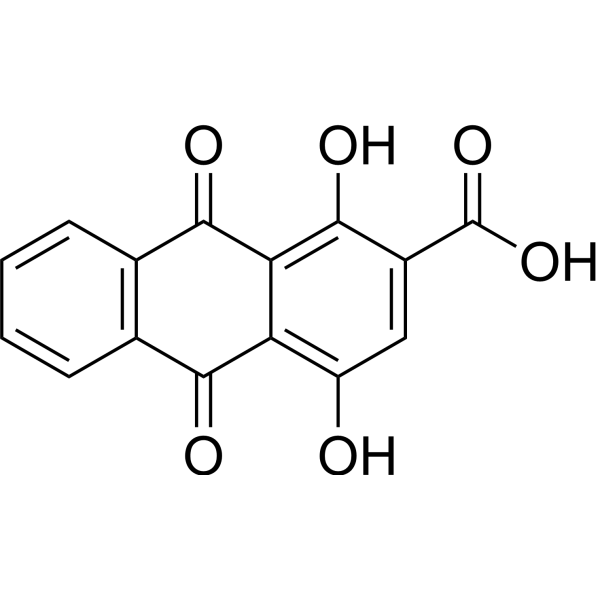
-
- HY-124417
-
|
|
Others
|
Metabolic Disease
|
|
SBI-477 (compound 41) analog inhibits intracellular lipid accumulation, increase celluar glucose uptake .
|
-

-
- HY-18728
-
|
|
GLUT
Autophagy
|
Cancer
|
|
STF-31 is a selective inhibitor of glucose transporter 1 (GLUT1), with an IC50 of 1 μM. STF-31 is also a NAMPT inhibitor. STF-31 inhibits glucose uptake in renal cell carcinoma (RCC) 4 cells .
|
-
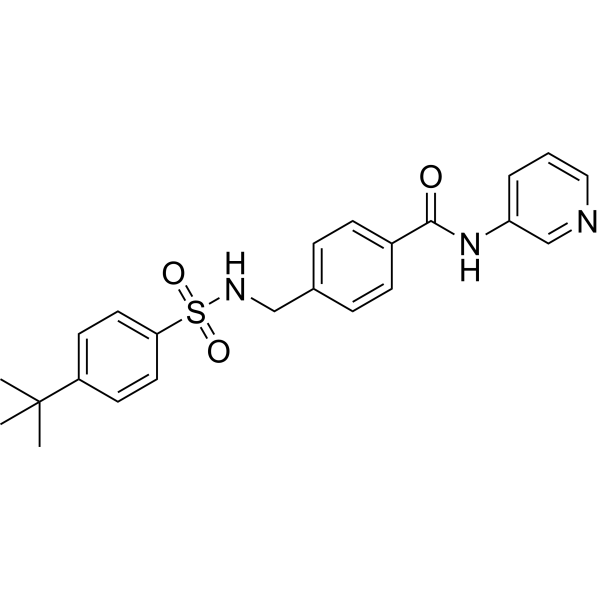
-
- HY-N2209
-
|
|
|
|
|
Angeloylgomisin H, as a major lignin extract of Schisandra rubriflora, has the potential to improve insulin-stimulated glucose uptake by activating PPAR-γ .
|
-
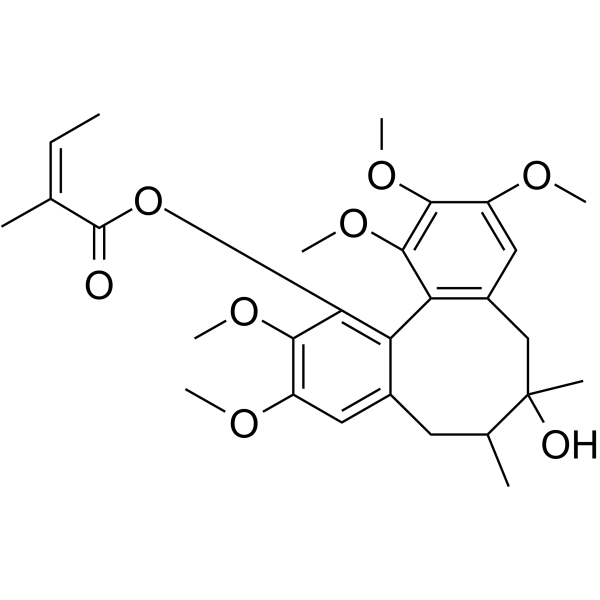
-
- HY-N1185
-
|
|
|
|
|
Tagitinin A is a sesquiterpene with anti-hyperglycemic activity. Tagitinin A significantly inhibits glucose uptake in differentiated 3T3-L1 adipocytes .
|
-
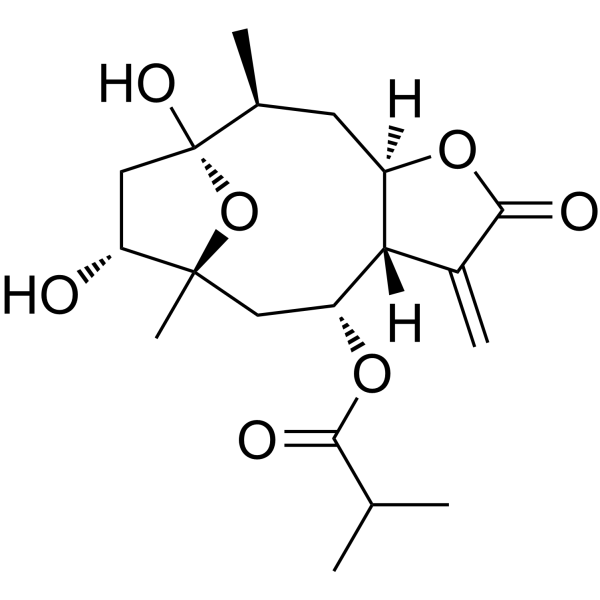
-
- HY-101849
-
|
|
GLUT
TNF Receptor
Apoptosis
|
Cardiovascular Disease
Cancer
|
|
Fasentin, a potent glucose uptake inhibitor, inhibits GLUT-1/GLUT-4 transporters. Fasentin preferentially inhibits GLUT4 (IC50=68 μM) over GLUT1. Fasentin is a death receptor stimuli (FAS) sensitizer and sensitizes cells to FAS-induced cell death. Fasentin is also a tumor necrosis factor (TNF) apoptosis-inducing ligand sensitizer. Fasentin blocks glucose uptake in cancer cell lines and has anti-angiogenic activity .
|
-

-
- HY-155961
-
-
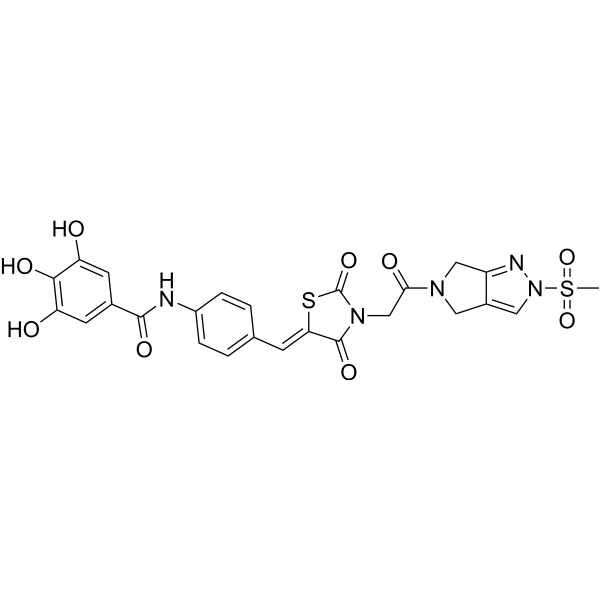
-
- HY-163279
-
|
|
Others
|
Others
|
|
Fluopipamine is an antagonist for Cellulose Synthase 1 (CESA1) with an IC50 of 0.78 μM. Fluopipamine leads a decrease in glucose uptake into cellulose and hyperaccumulation of CESAs at the PM in etiolated Arabidopsis seedlings .
|
-
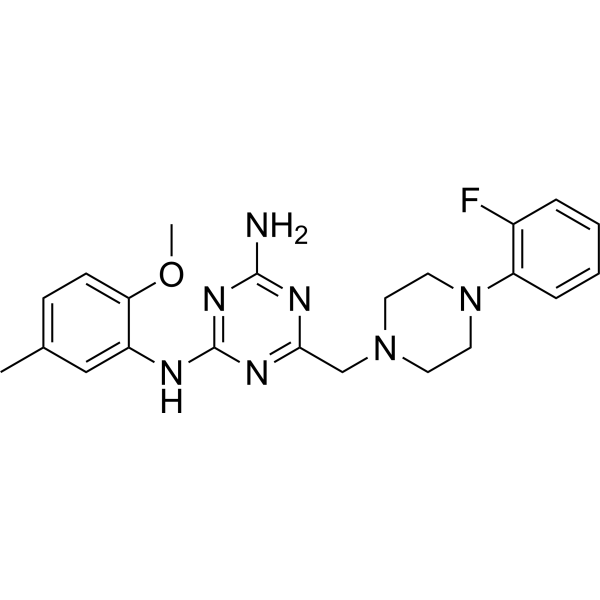
-
- HY-P1473
-
|
Amylin (8-37) (mouse, rat)
|
Amylin Receptor
|
Metabolic Disease
|
|
Amylin (8-37), rat is a truncated analog of native Amylin that selectively inhibits insulin-related glucose uptake and glycogen deposition in muscle tissue. Amylin (8-37), rat is a weak amylin receptor (AMY) antagonist.
|
-

-
- HY-N6258
-
|
|
AMPK
Apoptosis
|
Metabolic Disease
|
|
Kahweol is one of the consituents of the coffee from Coffea Arabica with anti-inflammatory anti-angiogenic, and anti-cancerous activities. Kahweol inhibits adipogenesis and increase glucose uptake by AMP-activated protein kinase (AMPK) activation. Kahweol induces apoptosis.
|
-
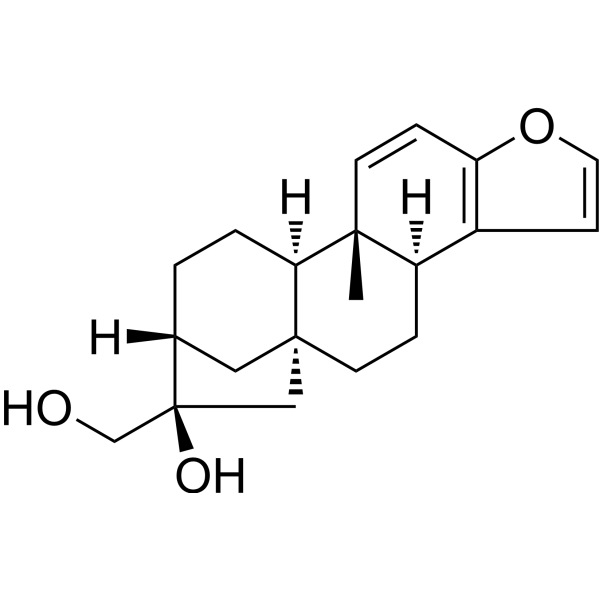
-
- HY-130319A
-
|
|
PPAR
|
Cardiovascular Disease
Metabolic Disease
|
|
9-HEPE, a oxidation product of Eicosapentaenoic acid, is a racemic mixture of 9(R)-HEPE and 9(S)-HEPE. 9-HEPE induces fatty acid oxidation, adipogenesis, and glucose uptake via activation of PPARs in vivo .
|
-
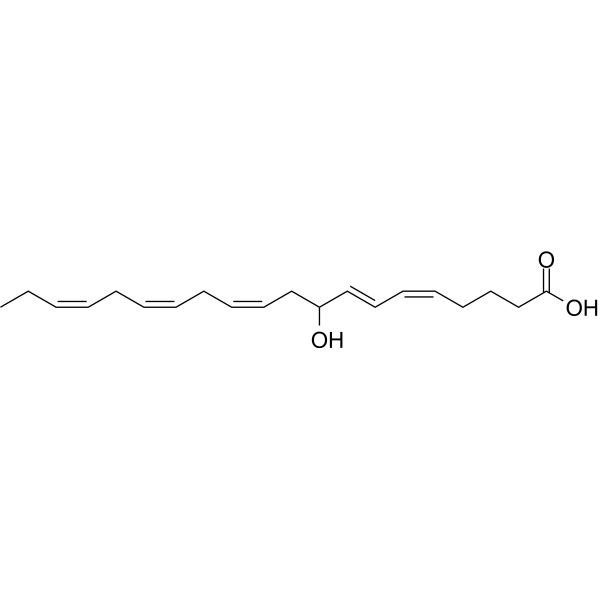
-
- HY-18686
-
|
|
|
|
|
AS1949490 is a potent, orally active, selective SHIP2 phosphatase inhibitor with IC50 values of 0.34, 0.62, 13, >50, >50, and >50 µM for Mouse SHIP2, Human SHIP2, Human SHIP1, Human PTEN, Human synaptojanin, and Human myotubularin, respectively. AS1949490 increases the phosphorylation of Akt, glucose consumption and glucose uptake. AS1949490 activates intracellular insulin signalling pathways. AS1949490 can be used for research of diabetes .
|
-

-
- HY-149727
-
|
|
Adrenergic Receptor
|
Metabolic Disease
|
|
β2AR agonist 2(compound 8a) is a β2 -Adrenergic receptor (β2AR) agonist. β2AR agonist 2 is a saturated nitrogen ring compound containing 4- to 7-membered heterocycle. β2AR agonist 2 has a chiral structure (the -R form) by carrying carbon containing the essential hydroxyl, thereby enhancing cellular glucose uptake (GU) activity and significantly stimulating glucose uptake by skeletal muscle cells. β2AR agonist 2 can be used in the study of Type 2 Diabetes (T2D) .
|
-
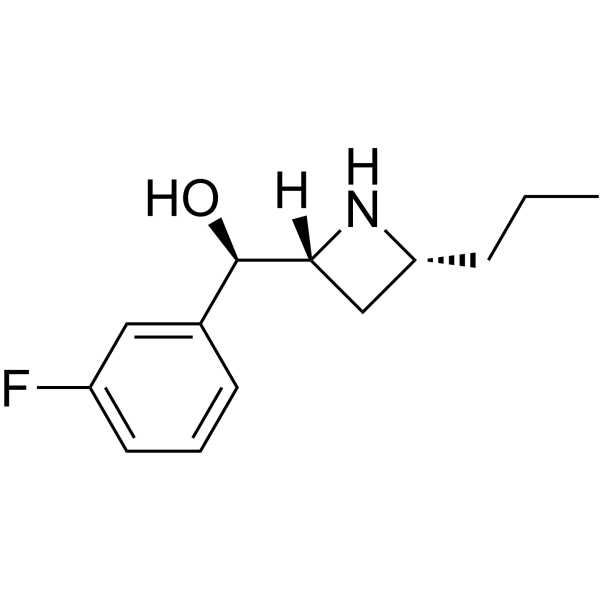
-
- HY-N7676
-
|
|
AMPK
HDAC
|
Cardiovascular Disease
Neurological Disease
Metabolic Disease
|
|
Marein has the neuroprotective effect due to a reduction of damage to mitochondria function and activation of the AMPK signal pathway. Marein improves insulin resistance induced by high glucose in HepG2 cells through CaMKK/AMPK/GLUT1 to promote glucose uptake, through IRS/Akt/GSK-3β to increase glycogen synthesis, and through Akt/FoxO1 to decrease gluconeogenesis. Marein is a HDAC inhibitor with an IC50 of 100 µM. Marein has beneficial antioxidative, antihypertensive, antihyperlipidemic and antidiabetic effects .
|
-

-
- HY-B1080A
-
|
|
Influenza Virus
Akt
|
Infection
Metabolic Disease
Inflammation/Immunology
Cancer
|
|
Tilorone is an orally active antiviral agent and interferon inducer that also has potential antineoplastic, immunomodulatory, and metabolic modulating effects. Tilorone induces an abnormally delayed interferon response and primarily stimulates interferon production in lymphoid tissue. Thus, Tilorone exerts antiviral effects and can be used as a chemotherapeutic agent. Tilorone has the potential to inhibit type 2 diabetes by increasing glucose uptake in vivo and in skeletal muscle cells by enhancing Akt2/AS160 signaling and glucose transporter levels .
|
-
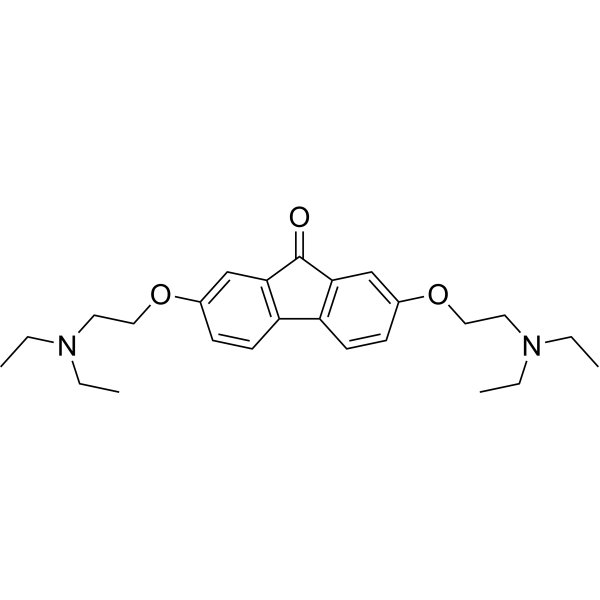
-
- HY-118567
-
|
BMOV
|
SHP2
Phosphatase
|
Metabolic Disease
|
|
Bis(maltolato)oxovanadium(IV) (BMOV) is a potent, reversible, competitive and orally active pan-PTP (protein tyrosine phosphatases) inhibitor. Bis(maltolato)oxovanadium(IV) inhibits HCPTPA, PTP1B, HPTPβ and SHP2 with IC50s of 126 nM, 109 nM, 26 nM and 201 nM, respectively. Bis(maltolato)oxovanadium(IV) is a potent insulin sensitizer .
|
-
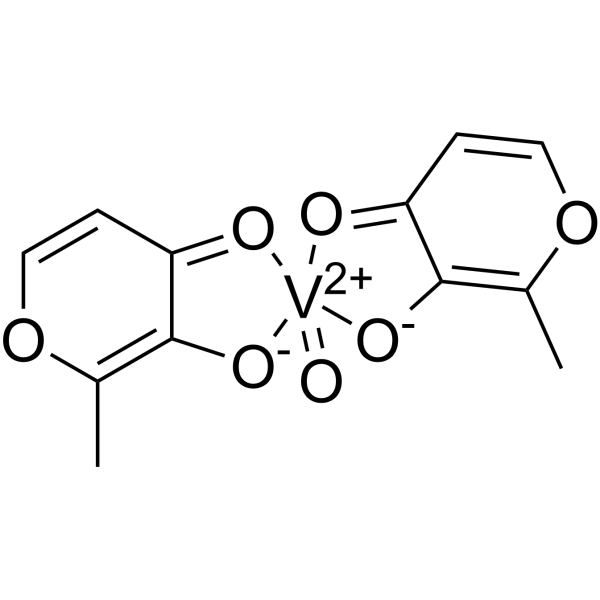
-
- HY-P2048A
-
|
|
AMPK
GLUT
|
Metabolic Disease
|
|
MOTS-c(human) acetate is a mitochondrial-derived peptide. MOTS-c(human) acetate induces the accumulation of AMP analog AICAR, increases activation of AMPK and expression of its downstream GLUT4. MOTS-c(human) acetate induces glucose uptake and improves insulin sensitivity. MOTS-c(human) acetate has implications in the regulation of obesity, diabetes, exercise, and longevity .
|
-

-
- HY-19824
-
|
|
Autophagy
|
Cancer
|
|
3PO is an inhibitor of PFKFB3. 3PO attenuates the proliferation of several cancer cell lines with IC50s of 1.4-24 μmol/L. 3PO suppresses glucose uptake and decreases the intracellular concentration of Fru-2,6-BP, lactate, ATP, NAD + and NADH. 3PO can be used for the research of cancer .
|
-
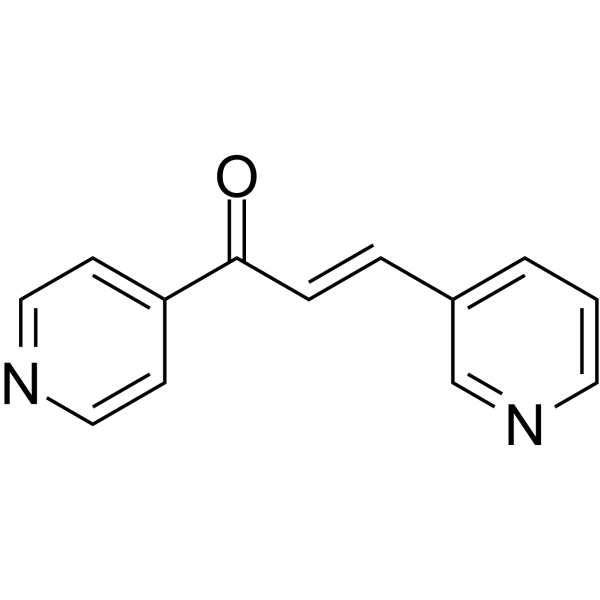
-
- HY-124418
-
|
|
Others
|
Metabolic Disease
|
|
SBI-477 is a chemical probe stimulated insulin signaling by deactivating the transcription factor MondoA, leading to reduced expression of the insulin pathway suppressors thioredoxin-interacting protein (TXNIP) and arrestin domain–containing 4 (ARRDC4). SBI-477 coordinately inhibits triacylglyceride (TAG) synthesis and enhances basal glucose uptake in human skeletal myocytes .
|
-
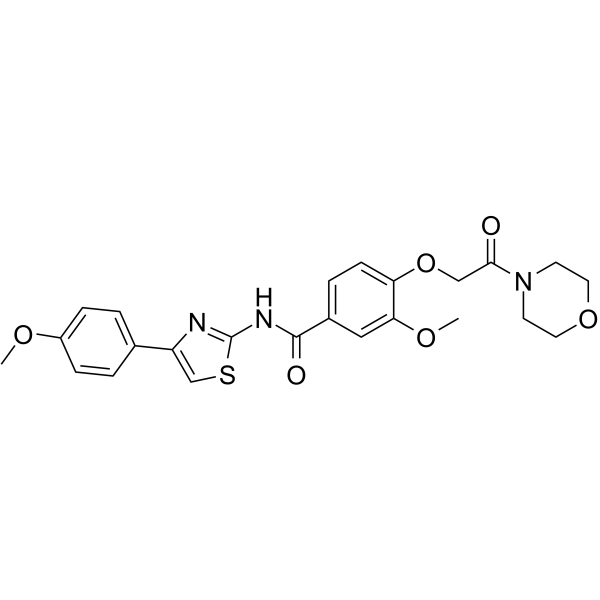
-
- HY-123194
-
|
|
Histone Demethylase
Sirtuin
|
Metabolic Disease
|
|
SIRT2/6-IN-1 (Compound 5) is a SIRT6/SIRT2 inhibitor, with IC50s of 106 μM and 114 μM. SIRT2/6-IN-1 increases H3K9 acetylation, increases glucose uptake and reduces TNF-α secretion in cells .
|
-
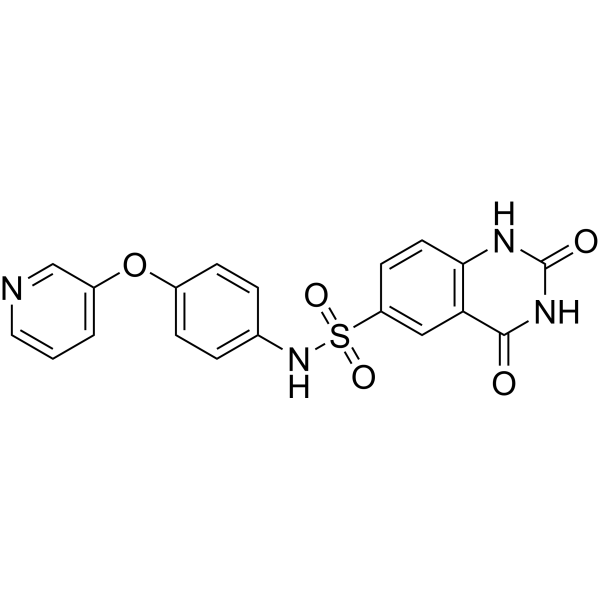
-
- HY-12203
-
|
|
Autophagy
Apoptosis
|
Cancer
|
|
PFK-158 is a potent and selective PFKFB3 inhibitor with an IC50 value 137 nM. PFK-158 reduces glucose uptake, ATP production, lactate release, and induces apoptosis and autophagy in cancer cells. PFK-158 has broad anti-tumor activity. PFK-158 can also enhance Colistin's resistance to bacteria .
|
-
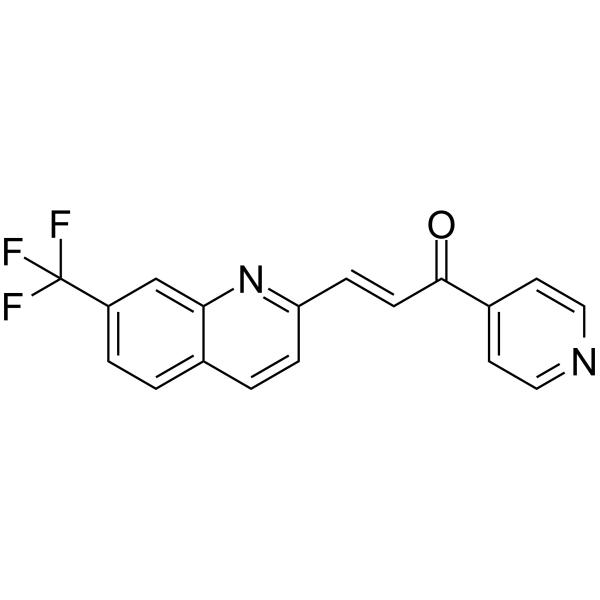
-
- HY-148114
-
|
|
Others
|
Cancer
|
|
MOPIPP is a novel indolebased chalcone, and vacuolin-1, is a non-lethal vacuoleinducing 2-propyl analog of MOMIPP (HY-148114). MOPIPP induces cellular vacuolization and increases autophagosomes numbers. MOPIPP also triggers methuosis, and interrupts glucose uptake and glycolytic metabolism. MOPIPP can cross the blood-brain barrier and shows efficacy in suppressing tumor progression agaisnt glioblastoma cells .
|
-

-
- HY-143260
-
|
|
GSK-3
|
Metabolic Disease
Inflammation/Immunology
Cancer
|
|
GSK-3β inhibitor 6 is a potent GSK-3β inhibitor with an IC50 value of 24.4 μM. GSK-3β inhibitor 6 shows high hepatocyte glucose uptake (38%). GSK-3β inhibitor 6 can be used in the research of numerous diseases like diabetes, inflammation, cancer, Alzheimer's disease, and bipolar disorder .
|
-
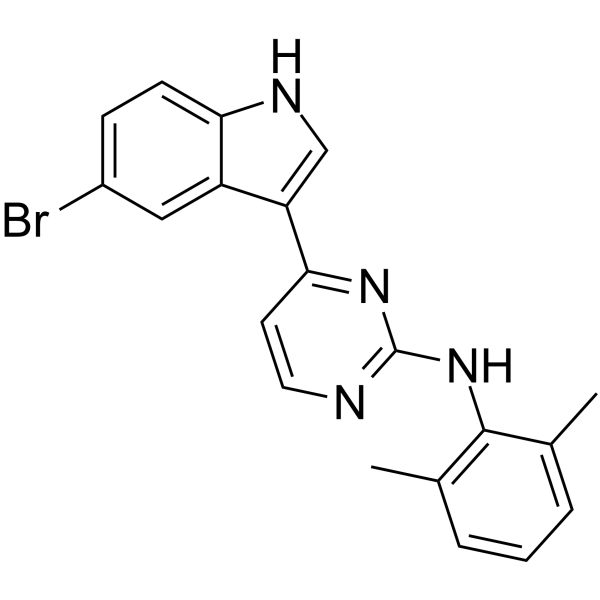
-
- HY-D0090
-
|
|
Fluorescent Dye
|
Others
|
|
MQAE is a fluorescently-labeled deoxyglucose analog that is used primarily to directly monitor glucose uptake by living cells and tissues. It is also used as a topical contrast reagent for the detection of neoplasia. MQAE can be used in real-time confocal, high-resolution, or wide-field fluorescence microscopy as well as in flow cytometry. The probe can be excited by the Argon laser at 488 nm to give the environment-sensitive fluorescence. It has lower photostability than the rhodamine-based fluorescent probes.
|
-
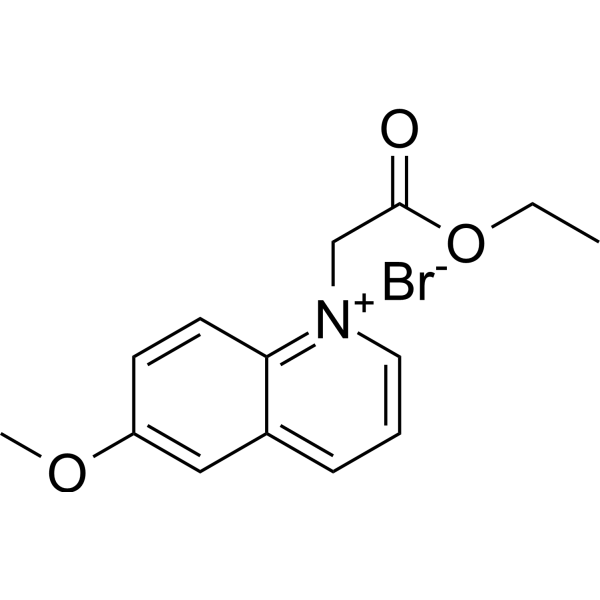
-
- HY-N1511
-
|
|
|
|
|
Ganoderic acid D, a highly oxygenated tetracyclic triterpenoid, is the major active component of Ganoderma lucidum. Ganoderic acid D upregulates the protein expression of SIRT3 and induces the deacetylated cyclophilin D (CypD) by SIRT3. Ganoderic acid D inhibits the energy reprogramming of colon cancer cells including glucose uptake, lactate production, pyruvate and acetyl-coenzyme production in colon cancer cells . Ganoderic acid D induces HeLa human cervical carcinoma apoptosis .
|
-

-
- HY-13991A
-
|
|
Ras
|
Metabolic Disease
Cancer
|
|
(S)-CCG-1423 is an inhibitor of Rho signaling that blocks the nuclear import of MRTF-A. (S)-CCG-1423 reduces the nuclear accumulation of MRTF-A and improves glucose uptake and tolerance in insulin-resistance mice in vivo. (S)-CCG-1423 exhibits higher inhibition activity than the SR- and the R-isomers of CCG-1423 (HY-13991). (S)-CCG-1423 can be used for the research of cancer and diabetes .
|
-
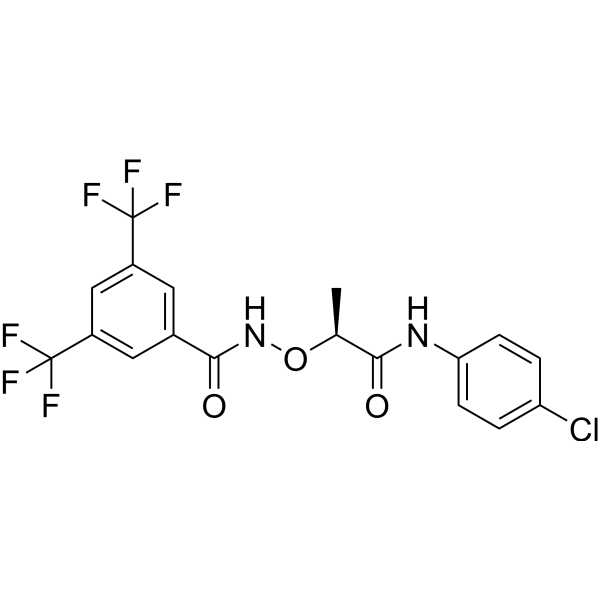
-
- HY-116215
-
2-NBDG
Maximum Cited Publications
27 Publications Verification
|
Fluorescent Dye
|
Others
|
|
2-NBDG is a fluorescently-labeled deoxyglucose analog that is used primarily to directly monitor glucose uptake by living cells and tissues. It is also used as a topical contrast reagent for the detection of neoplasia. 2-NBDG can be used in real-time confocal, high-resolution, or wide-field fluorescence microscopy as well as in flow cytometry. The probe can be excited by the Argon laser at 488 nm to give the environment-sensitive fluorescence. It has lower photostability than the rhodamine-based fluorescent probes.
|
-

-
- HY-115461
-
|
|
Insulin Receptor
|
Metabolic Disease
|
|
MID-1 is a disruptor of MG53-IRS-1 (Mitsugumin 53-insulin receptor substrate-1) interaction. MID-1 disrupts molecular association of MG53 with IRS-1 and abolishes MG53-induced IRS-1 ubiquitination and degradation in skeletal muscle, leading to elevated IRS-1 expression level and increased insulin signaling and glucose uptake .
|
-
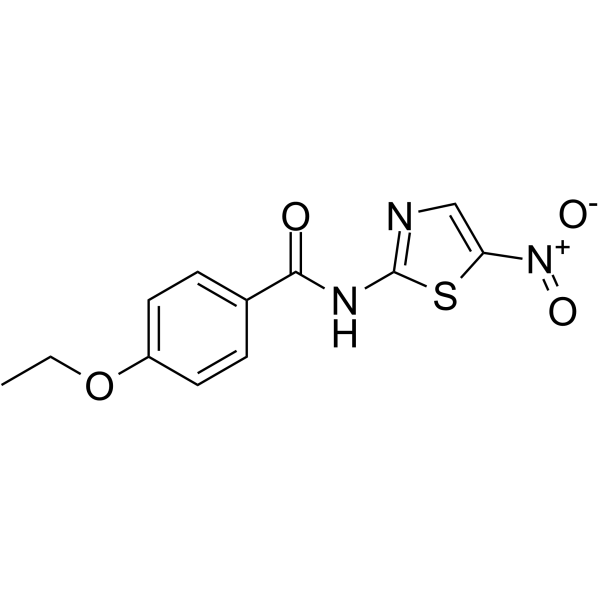
-
- HY-132898
-
|
|
PI3K
|
Others
|
|
PI3K-IN-23 is an (E)-9-oxooctadec-10-en-12-ynoic acid analogue to promote glucose uptake with an EC50 value of 7.00 μM. PI3K-IN-23 is a click chemistry reagent, it contains an Alkyne group and can undergo copper-catalyzed azide-alkyne cycloaddition (CuAAc) with molecules containing Azide groups.
|
-
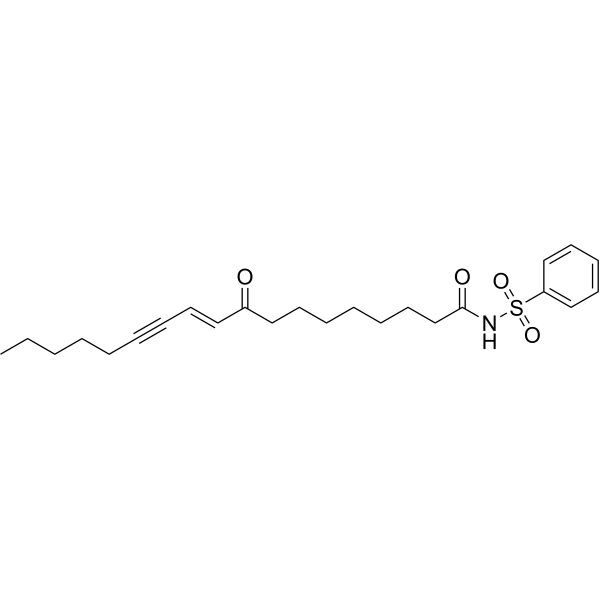
- HY-N6924
-
|
|
HIV
|
Infection
Metabolic Disease
|
|
Zingibroside R1 is dammaranae-type triterpenoid saponin, isolated from rhizomes, taproots, and lateral roots of Panax japonicas C. A. Meyer, shows excellent anti-tumor effects as well as anti-angiogenic activity .
Zingibroside R1 possesses some anti-HIV-1 activity.
Zingibroside R1 has inhibitory effects on the 2-deoxy-D-glucose (2-DG) uptake by EAT cells (IC50=91.3 μM) .
|
-

- HY-143261
-
|
|
GSK-3
|
Metabolic Disease
Inflammation/Immunology
Cancer
|
|
GSK-3β inhibitor 7 is a GSK-3β inhibitor with an IC50 value of 5.25 μM. GSK-3β inhibitor 7 is inserted into the ATP-binding binding pocket of GSK-3β and forms hydrogen-bond. GSK-3β inhibitor 7 shows high hepatocyte glucose uptake (83.5%), and can be used in the research of numerous diseases like diabetes, inflammation, cancer, Alzheimer's disease, and bipolar disorder .
|
-
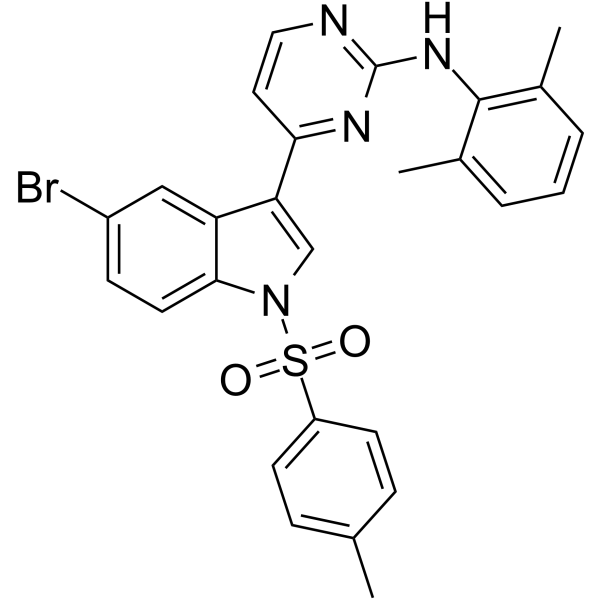
- HY-149255
-
|
|
Phosphatase
Aldose Reductase
|
Metabolic Disease
|
|
PTP1B/AKR1B1-IN-2 (Compound 7f) is a dual PTP1B/AKR1B1 inhibitor (IC50s: 3.2 and 2.1 μM, Kis: 4.0 and 0.9μM). PTP1B/AKR1B1-IN-2 is an insulin-mimetic agent. PTP1B/AKR1B1-IN-2 improves glucose uptake in murine C2C12 myoblasts. PTP1B/AKR1B1-IN-2 can be used for research of Type 2 diabetes mellitus (T2DM) .
|
-
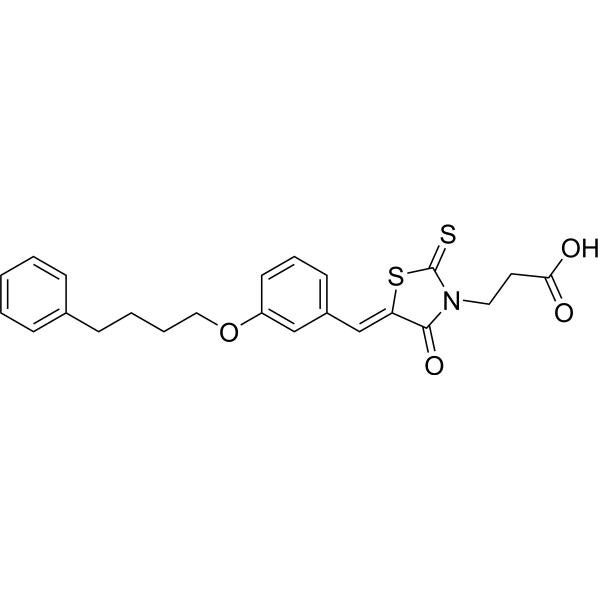
-
-
HY-L083
-
|
|
2043 compounds
|
|
Mutations in oncogenes and tumor suppressor genes can modify multiple signaling pathways and in turn cell metabolism, which facilitates tumorigenesis. The paramount hallmark of tumor metabolism is “aerobic glycolysis” or the Warburg effect, coined by Otto Warburg in 1926, in which cancer cells produce most of energy from glycolysis pathway regardless of whether in aerobic or anaerobic condition. Usually, cancer cells are highly glycolytic (glucose addiction) and take up more glucose than do normal cells from outside. The increased uptake of glucose is facilitated by the overexpression of several isoforms of membrane glucose transporters (GLUTs). Likewise, the metabolic pathways of glutamine, amino acid and fat metabolism are also altered. Recent trends in anti-cancer drug discovery suggests that targeting the altered metabolic pathways of cancer cells result in energy crisis inside the cancer cells and can selectively inhibit cancer cell proliferation by delaying or suppressing tumor growth.
MCE provides a unique collection of 2043 compounds which cover various tumor metabolism-related signaling pathways. These compounds can be used for anti-cancer metabolism targets identification, validation as well anti-cancer drug discovery.
|
| Cat. No. |
Product Name |
Type |
-
- HY-113870
-
|
|
Fluorescent Dyes/Probes
|
|
6-NBDG is a fluorescent glucose analogue, it can be used for fluorescence imaging and monitoring glucose transport and uptake. 6-NBDG can be used as a fluorescent probe for detecting macrophage-rich atherosclerotic plaques .
|
-
- HY-D0090
-
|
|
Fluorescent Dyes/Probes
|
|
MQAE is a fluorescently-labeled deoxyglucose analog that is used primarily to directly monitor glucose uptake by living cells and tissues. It is also used as a topical contrast reagent for the detection of neoplasia. MQAE can be used in real-time confocal, high-resolution, or wide-field fluorescence microscopy as well as in flow cytometry. The probe can be excited by the Argon laser at 488 nm to give the environment-sensitive fluorescence. It has lower photostability than the rhodamine-based fluorescent probes.
|
-
- HY-116215
-
|
|
Fluorescent Dyes/Probes
|
|
2-NBDG is a fluorescently-labeled deoxyglucose analog that is used primarily to directly monitor glucose uptake by living cells and tissues. It is also used as a topical contrast reagent for the detection of neoplasia. 2-NBDG can be used in real-time confocal, high-resolution, or wide-field fluorescence microscopy as well as in flow cytometry. The probe can be excited by the Argon laser at 488 nm to give the environment-sensitive fluorescence. It has lower photostability than the rhodamine-based fluorescent probes.
|
| Cat. No. |
Product Name |
Target |
Research Area |
-
- HY-P1473
-
|
Amylin (8-37) (mouse, rat)
|
Amylin Receptor
|
Metabolic Disease
|
|
Amylin (8-37), rat is a truncated analog of native Amylin that selectively inhibits insulin-related glucose uptake and glycogen deposition in muscle tissue. Amylin (8-37), rat is a weak amylin receptor (AMY) antagonist.
|
-
- HY-P2048A
-
|
|
AMPK
GLUT
|
Metabolic Disease
|
|
MOTS-c(human) acetate is a mitochondrial-derived peptide. MOTS-c(human) acetate induces the accumulation of AMP analog AICAR, increases activation of AMPK and expression of its downstream GLUT4. MOTS-c(human) acetate induces glucose uptake and improves insulin sensitivity. MOTS-c(human) acetate has implications in the regulation of obesity, diabetes, exercise, and longevity .
|
-
- HY-137874
-
|
|
Peptides
|
Metabolic Disease
Cancer
|
|
L-Glutamic γ-monohydroxamate is an antitumor agent, inhibits cell proliferation. L-Glutamic γ-monohydroxamate selectively inhibits the uptake of L-histidine into microvascular endothelial cell. L-Glutamic γ-monohydroxamate, as a vanadium ligand, activates glucose uptake and metabolism, thus decreases the blood glucose levels in vivo .
|
| Cat. No. |
Product Name |
Category |
Target |
Chemical Structure |
Your information is safe with us. * Required Fields.
Inquiry Information
- Product Name:
- Cat. No.:
- Quantity:
- MCE Japan Authorized Agent:





























































